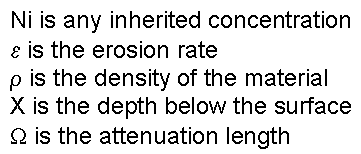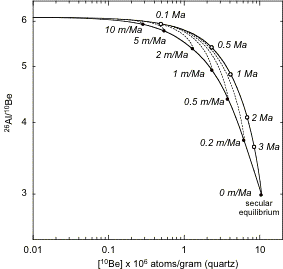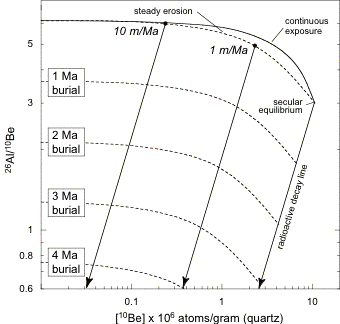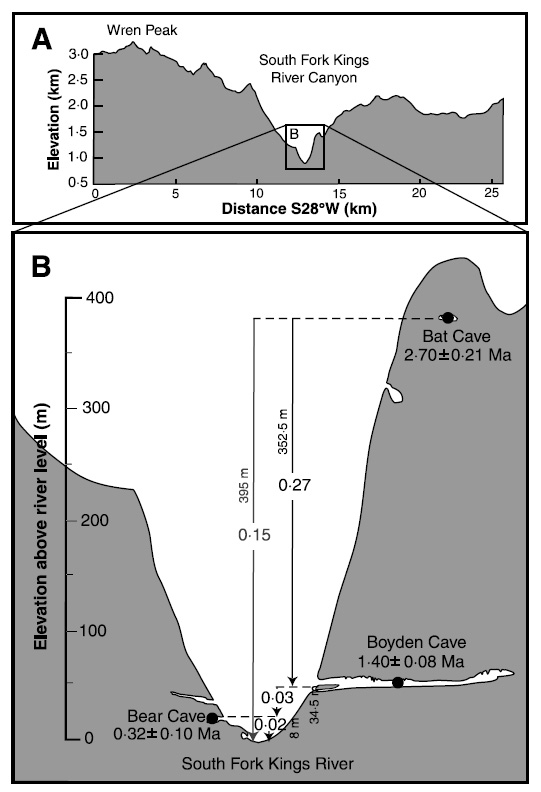Cosmogenic nuclides are formed from the interactions of cosmic rays with terrestrial atoms (either atmospheric or in situ, meaning within rock). The application of in situ cosmogenic nuclides has proved valuable in many geomorphic systems. Two of the most common nuclides measure are 10Be and 26Al. The concentration of these nuclides (N) is dependent on the rate of production (P) and decay (lambda)…
![]()
![]()
where t is time. Because production within rock decreases exponentially from the surface (in the case of Be and Al), erosion will impact the concentrations measured within the rocks. We can describe this relationship with the following equation…
![]()

By measuring two nuclides, such as 10Be and 26Al, we can solve for both erosion and exposure time as depicted below

![]()
Another twist in this method is the fact that most of these nuclides are radiogenic, so the rate of decay is an important consideration. If measuring surface samples, the decay component is included in the overall nuclide concentration equation as shown above. If a sample has been buried. This rate of decay can be utilized to measure time since burial…


![]()
Granger et al., 1997 measured the nuclide concentration found in sediments trapped in perched caves and revealed an incision history of the New River in
